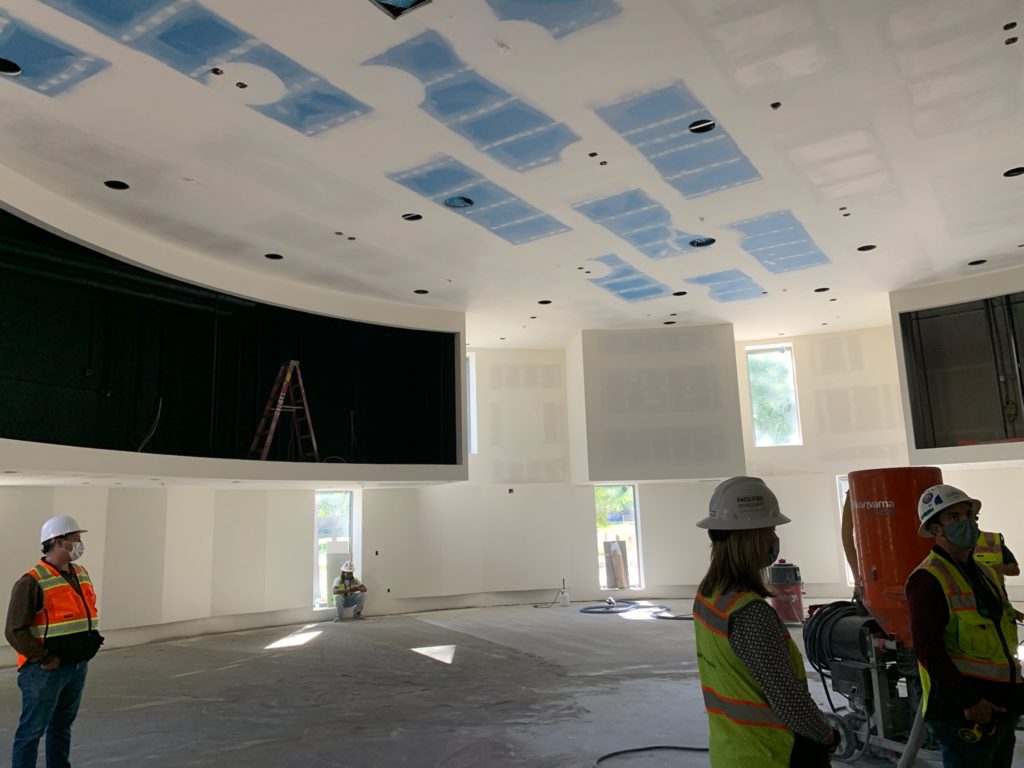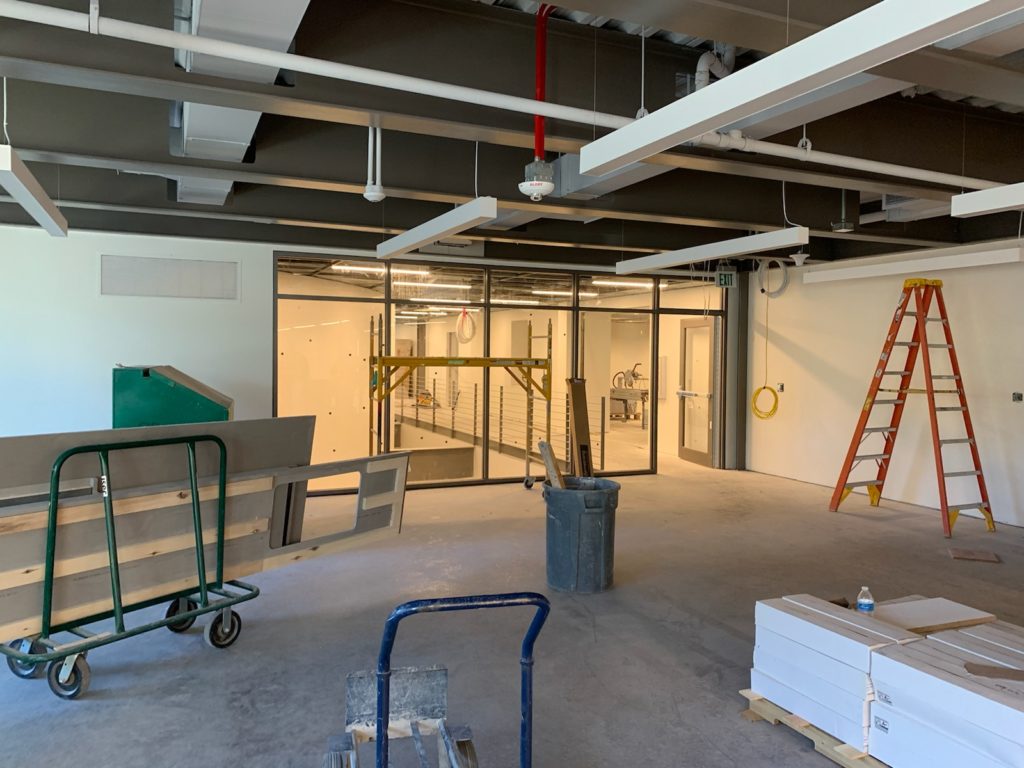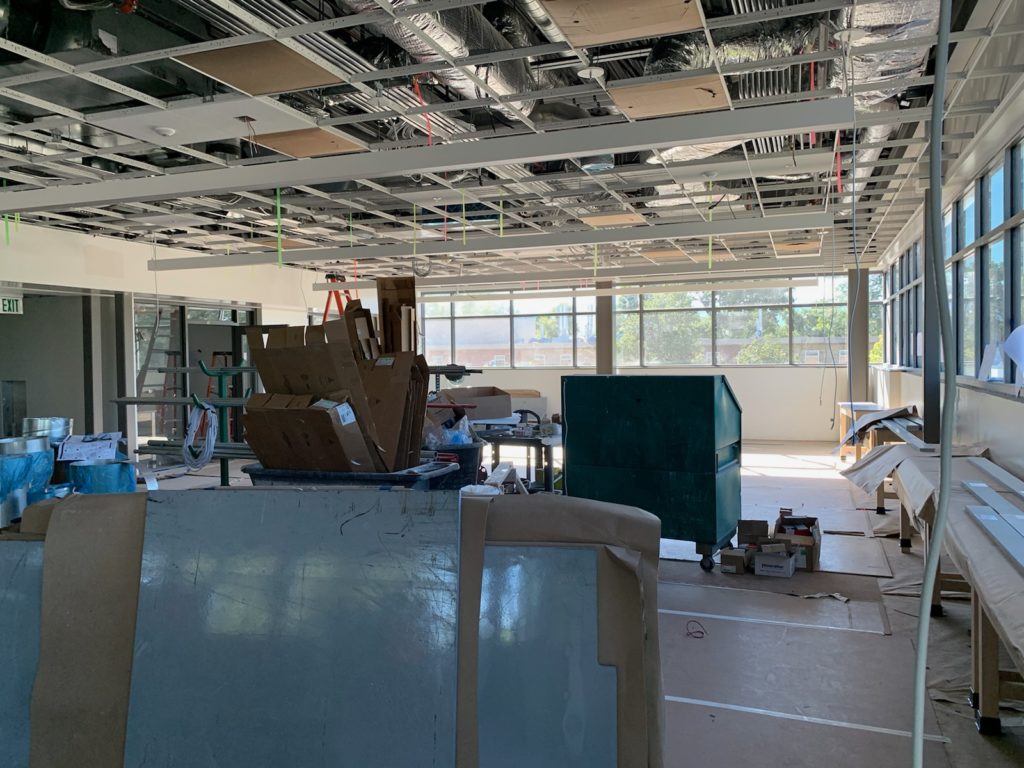Excitement is growing for the 2022 opening of the new College of Agricultural Sciences building at Colorado State University. The Horticulture and Landscape Architecture Department will be using many of the rooms in the new building, providing modern, state-of-the-art learning experiences and senses of pride for students preparing for green industry careers.
“It’s going to be a first-class facility. CSU has a great arboretum, greenhouses and trial facilities but the Horticulture and Landscape Architecture classrooms and offices are dated. This new building is a major improvement that will bring us into the 21st century,” said Dr. James Klett, Professor and Extension Landscape Horticulturist in CSU’s Department of Horticulture and Landscape Architecture.
Klett, who has been at CSU for 42 years, said the former Shepardson Building became the home of the College of Agricultural Sciences in 1938, and had only minor updates over the years. The building is being completely renovated and expanded by 41,000 square feet, including adding a new façade and reconfiguring classrooms, offices, studios, and student spaces.
“The new building will have a totally different atmosphere and will attract more students,” he explained. “It will feature a classroom in the round and two to three large university classrooms with zooming capabilities and all very high tech.”

Classroom in the round under construction 
A design studio taking shape
The building will contain the first classroom in the round on campus, where professors teach from the center of the room and students sit in surrounding rows. Screens for presentations will circle the room, behind and above the student rows.
The first floor will include offices for the dean, administration, communications, and development. It will also have space for the student success center where advisors can meet with students.
Classrooms and faculty offices for the Horticulture and Landscape Architecture and Agricultural Natural Resource Economics departments will be on the first and second floors. The second floor will also have design studios for the landscape design and contracting programs, though the landscape architecture studios will remain in the Natural and Environmental Science Building.
Another unique building feature will be a large patio and green roof on the third floor, if funding is found for its construction. The third floor will also have labs and classrooms for plant materials, soil and crop science research.
“The basement remodel will be a huge improvement, creating a really nice space for graduate student offices, meeting rooms for clubs and student-friendly gathering places,” Klett said.
In a little tribute to what was there before, the exterior will be landscaped with young plants from the former landscape, plus trees that were cut down for the expansion are being used as materials for new conference tables, benches and walls.
“I planted some of those trees when I came here in 1980. The trees that will be repurposed include honey locust, ash, southwest white pine, and spruce,” he explained.

A lab coming together 
Walls made from wood that was removed from the grounds during construction
CSU Continues to Seek Funding Partners
While the majority of the building’s construction is being paid for by three rounds of state funding approved by the Colorado legislature, additional funding is being sought. The college is working to raise money through companies and organizations purchasing the naming rights for rooms as well as the green roof and patio.
The Colorado Horticulture Research and Education Foundation and Colorado Garden and Home Show are in discussions with college staff about contributing funds to the building. Courtney Spilker of the college’s Development Department is the contact for anyone interested in learning about the possibilities.
Nutrien, a fertilizer company based in Canada with offices in Loveland, Colo., is providing the college with $1 million annually over 10 years, in trade for renaming Shepardson as the Nutrien Agricultural Sciences Building. The company produces and distributes more than 25 million tons of potash, nitrogen and phosphate products for agricultural, industrial and feed customers worldwide. It has operations and investments in 14 countries and 20,000 employees, including more than 600 CSU alumni.
The $10 million from the company is the largest private donation in the College of Agricultural Sciences’ history. It will fund: scholarships for students focusing on education and the success of women and students from diverse backgrounds; program enhancements to help students become career-ready, graduate and find employment; recruitment of top talent in the application of technology to agricultural problems; sponsorship of engagement and educational events at the nexus of technology, innovation and agriculture; and sponsorship of the Nutrien Ag Day BBQ held each fall during a home football game.
The college expects to move some of the administrative staff into the new building in March 2022 and faculty in summer 2022. The plan is for students to begin using classrooms, studios and the rest of the building in fall 2022.
Source: In addition to Dr. Klett’s interview, information for this article came from an article by Tony Phifer, posted on the CSU website.










